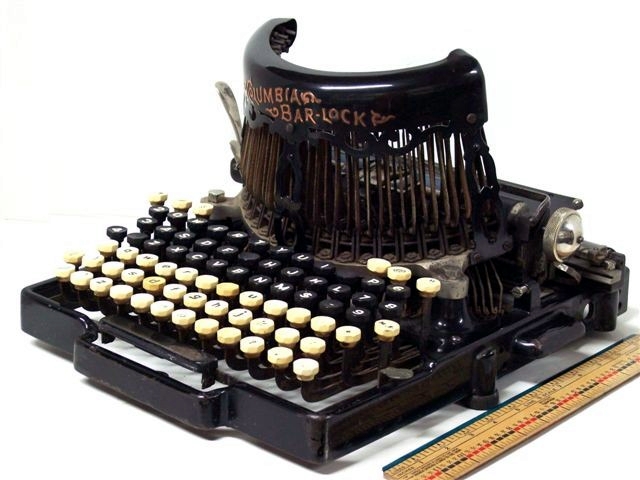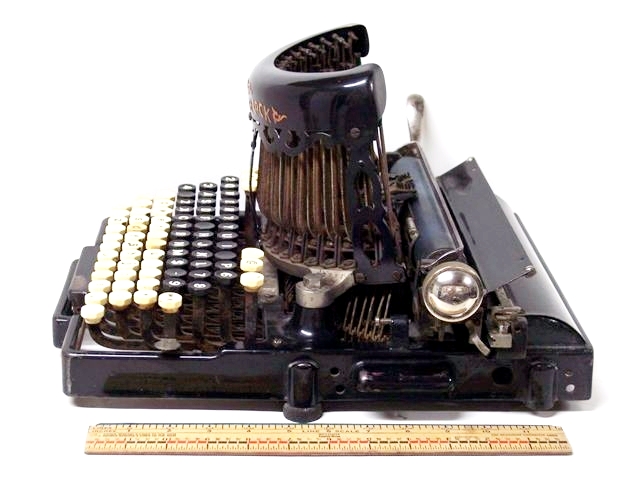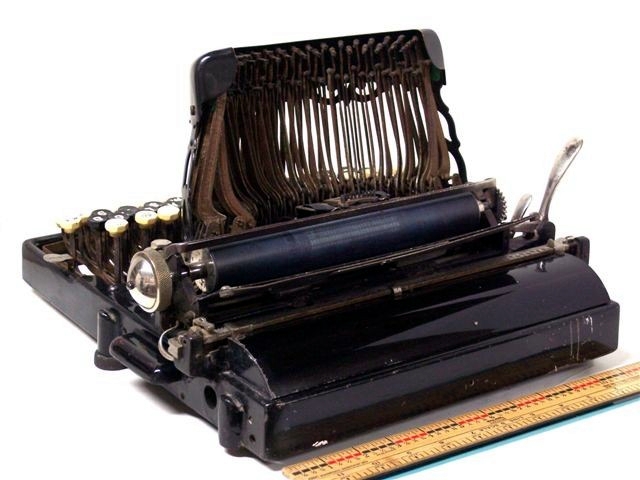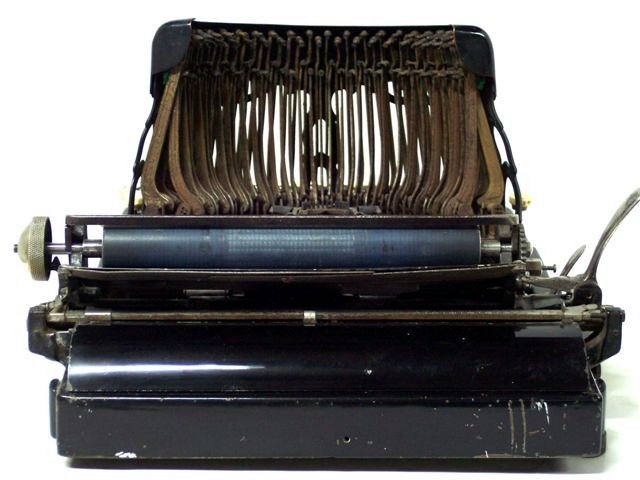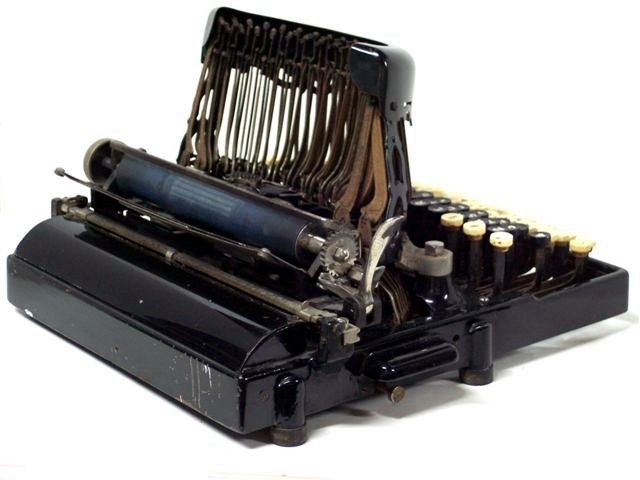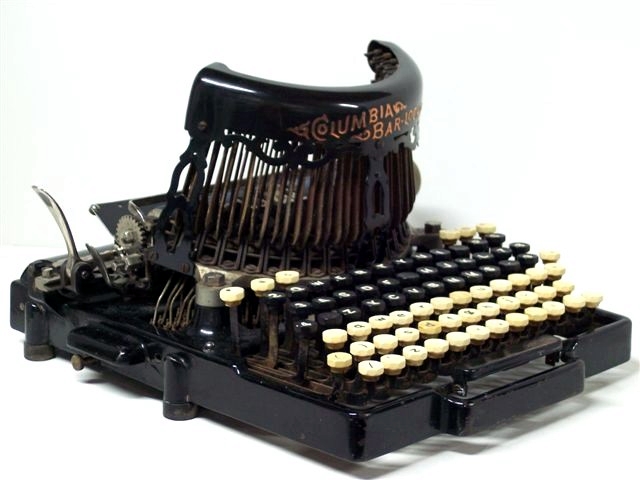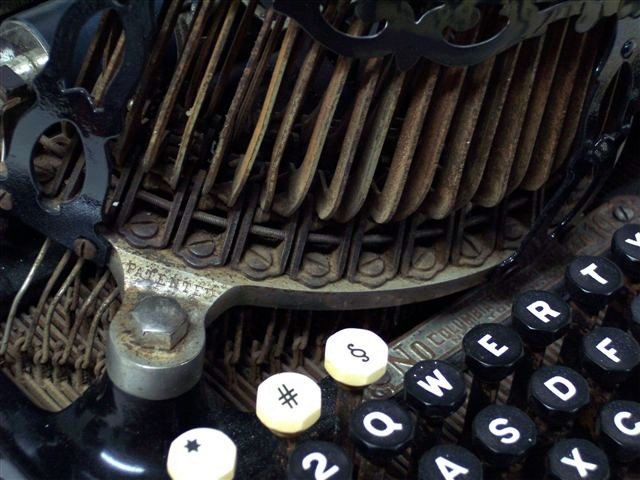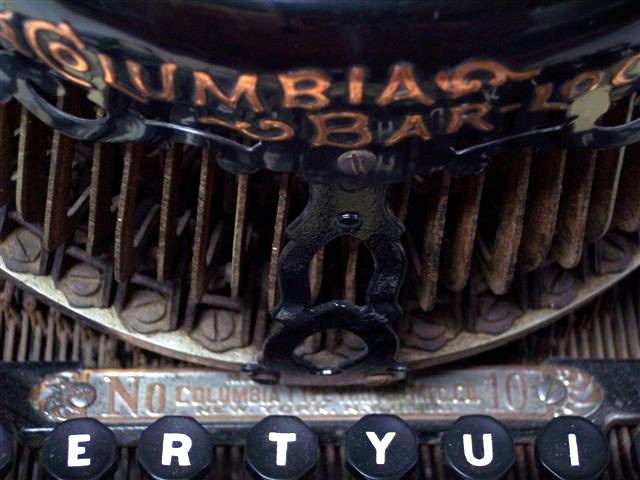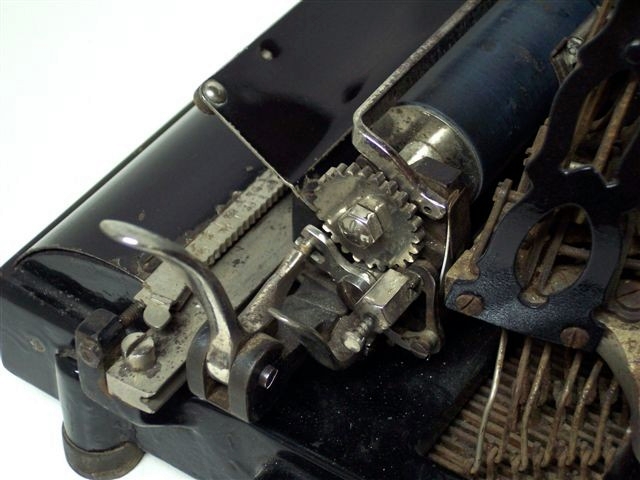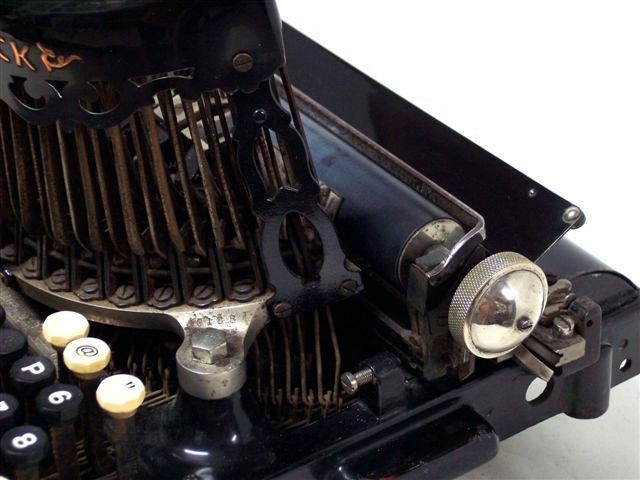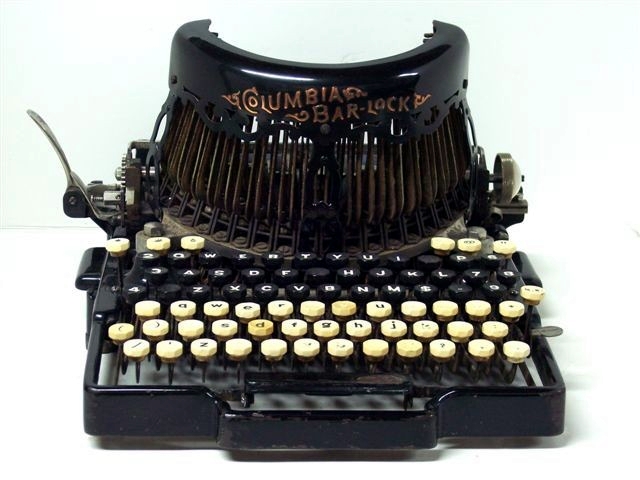
Exotic to our modern eye, the Bar-Lock was invented by Charles Spiro and was produced by the Columbia Typewriter Manufacturing Company of New York. The earliest version was more heavily decorated than this one, but fundamentally these machines all were the same. Each keystroke of the double keyboard sent one typebar down from the upright front position to strike the upper part of the platen. Quite a sight! The company eventually sold out to an English firm and continued in business selling first a four-row version of the machine and later a delightful little portable, the three-row front strike Bar-Let. I hope to have one of these for the museum some fine day.
Manufactured at the turn of the century, the Bar-Lock 10 reflects the movement away from the earlier Victorian view that the gaudier, the better. Queen Victoria died in 1901, still in mourning for the death of her husband, Prince Edward, who had died in 1861. Bar-Lock would relocate to Britain in 1908.
Events of the time that resonate to this day include U.S. President McKinley, hoping to build prosperity at home through trade with China, calls for equal trading rights among all powers in all parts of China. It is ignored. Germany leads the world in literacy. Germany is well supplied with engineers, chemists, opticians, skilled workers for its factories, skilled managers, knowledgeable farmers and skilled military personnel. Perhaps this is a reflection of Germany's Social Democratic Party advocacy in 1891 of a variety of reforms: the 8-hour day; prohibition of child labor under the age of 14; government regulation of working conditions; the abolition of laws that restrict the right of people to assemble; direct suffrage by secret ballot; the election of judges; an end to laws that put women at a disadvantage as compared with men; a graduated income and property tax; free medical attention; a people's militia for defense; secularized public education; and no public money supporting religious institutions.
Literacy is said to be above 90 percent in Britain, France, Norway, Sweden, and Australia; between 70 and 90 percent in the United States, Canada and Japan; 78 percent in Italy; 50 to 70 in the Balkans; 30 to 50 percent range in Russia; and below 30 percent in China, India, Africa and the Islamic countries.
